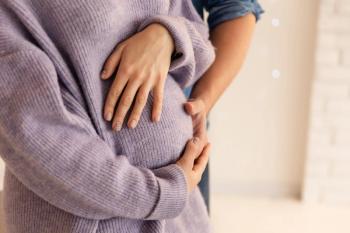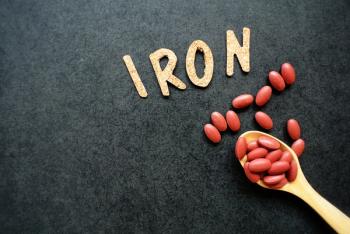
Postpartum depression on the decline
A study examines whether postpartum depression is on the decline. Plus: Are women who develop preeclampsia at greater risk of cardiovascular disease than those who didn't? Also, a look at the impact of severe nutrition deficiency in pregnancy on the development of mental health disorders in offspring.
Rates of postpartum depression (PDS) reported by women fell 5% between 2004 and 2012, according to a new report from the
The data are from the Pregnancy Risk Assessment Monitoring System (PRAMS). Through PRAMS, state-specific data are collected, on an ongoing basis, about maternal attitudes and experiences before, during, and soon after pregnancy among women who had a live birth in the preceding 2 to 9 months. The number of states completing the survey varies from year to year.
The report on PDS reflects information from states that met response rates for 2004, 2008, and 2012. More than 1.6 million women were included in the sample, from 27 reporting states and representing 41% of US births. They were asked to respond with “always,” “often,” “sometimes,” “rarely” or “never” to two questions: 1) Since your new baby was born, how often have you felt down, depressed or hopeless? and 2) Since your new baby was born, how often have you had little interest or little pleasure in doing things?
Based on the women’s answers, the CDC found that prevalence of PDS declined from 14.8% to 9.8% between the 2004 and 2012 surveys among 13 states for which data were available for all three study periods (P<0.01). Eight states-Alaska, Colorado, Georgia, Hawaii, Minnesota, Nebraska, Utah, and Washington-had statistically significant reductions (P<0.05) in PDS. Five states-Maine, Maryland, Oregon, Rhode Island, and Vermont-had no statistically significant changes in prevalence.
Prevalence of PDS was highest in new mothers who were aged ≤19 years or 20-24 years, of American Indiana/Alaska Native or Asian/Pacific Islanders, had ≤12 years of education, were unmarried, were postpartum smokers, had 3 or more stressful live events in the year before birth, gave birth to term low-birthweight infants, and had infants that required neonatal intensive care unit admission at birth.
The findings, the authors said, underscore the need for universal screening and appropriate treatment for pregnant and postpartum women with PDS. They noted, however, that the findings have three limitations: 1) the self-reports might not represent a clinical diagnosis of depression; 2) the data may not be generalizable to states not included in the analysis or pregnancies that didn’t result in a live birth; and 3) mental health treatment over time could not be assessed because data in PRAMS on that are limited.
Does preeclampsia increase risk of future CVD?
According to a new
Researchers performed a systematic search of EMBASE and MEDLINE to identify studies relevant to their line of inquiry and used random-effects meta-analysis to determine risk. They found 22 studies covering more than 6.4 million women including more than 258,000 women with preeclampsia.
Adjusting for potential confounders, preeclampsia was independently associated with an increased risk of future heart failure (risk ratio [RR], 4.19; 95% confidence interval [CI], 2.09–8.38), stroke (RR, 1.81; 95% CI, 1.29–2.55), cardiovascular disease (CVD) death (RR, 2.21; 95% CI, 1.83–2.66), and coronary heart disease (CHD) (RR, 2.50; 95% CI, 1.43–4.37). Following sensitivity analyses, preeclampsia continued to be associated with an increased risk of future heart disease, heart failure, and stroke after adjustment for age (RR, 3.89; 95% CI, 1.83–8.26), diabetes mellitus (RR, 4.19; 95% CI, 2.09–8.38), and body mass index (RR, 3.16; 95% CI, 1.41–7.07).
Following their analysis, the researchers concluded that preeclampsia was linked with a 2-fold increased risk of CHD, death because of CVD or CHD and a 4-fold increase in future incident heart failure. They said their findings underscore the need to continually monitor women with a history of preeclampsia for cardiovascular risk factors.
The impact of severe lack of nutrition on risk of psychoses in offspring
When women are exposed to a severe lack of nutrition during pregnancy, offspring may face an increased risk of nonaffective psychoses, according to results of a study published in
Researchers used data from Swedish health and population registers to follow up more than a half million people who were born between January 1982 and December 1989 from the time they were age 13 years until December 2011. Family-based study designs were used to test causality. The authors also used Cox proportional hazards regression models for socioeconomic status and potential risk factors to look at risk of developing nonaffective psychoses.
Of the 526,042 people in the cohort (48.52% female and 51.47% male; mean [SD] age, 26 [2.3] years), 2910 people had nonaffective psychoses at the end of the follow-up, of whom 704 had narrowly defined schizophrenia. Among those with nonaffective psychosis, 184 (6.32%) had mothers with extremely inadequate gestational weight gain (<8 kg for mothers with normal baseline body mass index [BMI]), while 23,627 (4.52%) of unaffected individuals had mothers with extremely inadequate gestational weight gain. Such extremely inadequate gestational weight gain was linked with an increased risk of nonaffective psychoses among offspring in adjusted models (hazard ratio [HR], 1.32; 95% confidence interval [CI], 1.13-1.54) as well as in matched-sibling analysis (HR, 1.61; 95% CI, 1.02-2.56).
A weak association was seen between maternal mild thinness in early pregnancy and an increased risk of nonaffective psychosis in offspring (HR for BMI ≥ 17.0 and <18.5, 1.21; 95% CI, 1.01-1.45) in mutually adjusted models. A similar association was seen with paternal severe thinness (HR for BMI<16.0, 2.53; 95% CI, 1.26-5.07). No association was seen between maternal underweight (HR, 1.46; 95% CI, 0.90-2.35), overweight (HR, 1.11; 95% CI, 0.73-1.68), or obesity (HR, 0.56; 95% CI, 0.23-1.38) and the risk of nonaffective psychosis in offspring in matched-sibling analysis.
The researchers concluded that insufficient weight gain during pregnancy was linked with an increased risk for nonaffective psychoses in offspring, which is consistent with historical studies examining the impact of maternal starvation.
Newsletter
Get the latest clinical updates, case studies, and expert commentary in obstetric and gynecologic care. Sign up now to stay informed.










